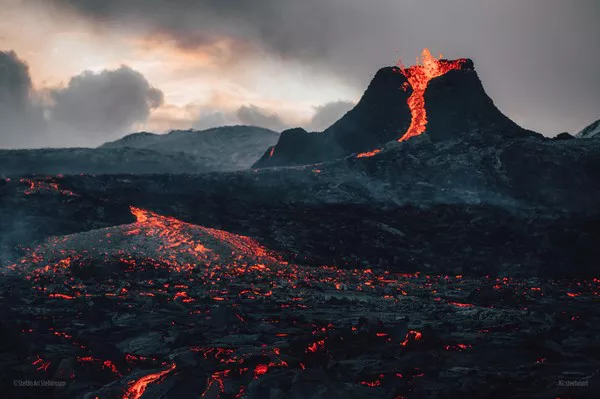Volcanic eruptions are awe-inspiring displays of Earth’s raw power, capable of reshaping landscapes and impacting climates. Throughout history, several volcanic eruptions have left an indelible mark on the planet. This article delves into the 10 most significant volcanic eruptions, exploring their devastating consequences and the geological processes that unleashed such colossal forces.
10 Biggest Volcanic Eruptions In History
1. Tambora, 1815: The Year Without a Summer
The eruption of Mount Tambora in 1815 stands as the most powerful volcanic event in recorded history. Located in Indonesia, Tambora’s eruption led to a global climate anomaly, earning 1816 the moniker “The Year Without a Summer.” The eruption spewed vast amounts of ash and aerosols into the atmosphere, causing widespread crop failures and social unrest across the Northern Hemisphere.
2. Krakatoa, 1883: The Sound Heard Around the World
The eruption of Krakatoa, another Indonesian giant, in 1883 generated one of the loudest sounds ever recorded. The explosion resulted in the collapse of the island, triggering tsunamis that devastated coastal regions. The atmospheric effects of the eruption led to vivid sunsets worldwide for years.
3. Mount Vesuvius, 79 AD: Preserving Pompeii and Herculaneum
The eruption of Mount Vesuvius in 79 AD is infamous for burying the Roman cities of Pompeii and Herculaneum under layers of ash and pumice. The catastrophic event provides a unique glimpse into ancient life, as the volcanic material preserved buildings, artifacts, and even human forms in astonishing detail.
4. Mount St. Helens, 1980: A Modern Catastrophe
In 1980, Mount St. Helens in Washington, USA, erupted explosively, causing massive destruction. The lateral blast and subsequent pyroclastic flows claimed lives and altered the landscape, leaving a lasting impact on the region. The eruption prompted significant advancements in volcano monitoring and research.
5. Laki, 1783: Iceland’s Fiery Fury
The Laki eruption in 1783 in Iceland ranks among the most impactful in history. It emitted vast amounts of sulfur dioxide, causing widespread environmental and climatic repercussions. The ensuing haze disrupted weather patterns, leading to crop failures and famine in Europe and beyond.
6. Mount Pinatubo, 1991: Cooling the Planet
The eruption of Mount Pinatubo in the Philippines in 1991 released a colossal amount of ash and gases, including sulfur dioxide. The resulting aerosols in the stratosphere led to a temporary cooling effect on Earth’s climate. Pinatubo’s eruption serves as a pivotal case for understanding volcanic influences on global temperatures.
7. Nevado del Ruiz, 1985: Tragedy in Colombia
The eruption of Nevado del Ruiz in 1985 resulted in a catastrophic lahar, a volcanic mudflow, that devastated the town of Armero in Colombia. Despite early warnings, a failure in communication and evacuation efforts led to one of the deadliest volcanic disasters of the 20th century.
8. Mount Tambora, 1815: The Year Without a Summer
Returning to Mount Tambora, its 1815 eruption warrants a second mention due to its profound impact on global climate. The eruption not only led to the “Year Without a Summer” but also caused crop failures, famines, and social unrest worldwide, illustrating the far-reaching consequences of a single volcanic event.
9. Eyjafjallajökull, 2010: Disrupting Air Travel
The eruption of Eyjafjallajökull in Iceland in 2010 attracted global attention as volcanic ash clouds disrupted air travel across Europe. The event highlighted the vulnerability of modern society to volcanic hazards and prompted improvements in aviation safety and communication during volcanic crises.
10. Yellowstone Caldera: A Supervolcanic Threat
While not associated with a specific eruption, the Yellowstone Caldera in the United States poses a potential supervolcanic threat. The last major eruption occurred around 640,000 years ago, and its consequences would be global, impacting climate and ecosystems on an unprecedented scale.
See Also: World’s Top 10 Countries For Biodiversity
Conclusion:
The annals of Earth’s history are etched with the fiery tales of volcanic eruptions, from the ancient ruins of Pompeii to the modern disruptions caused by Eyjafjallajökull. Understanding the dynamics of these events is crucial for mitigating their impact on human societies and ecosystems. As we continue to delve into the mysteries of our planet, the lessons from these colossal eruptions serve as both a warning and a source of invaluable knowledge for the future.
You Might Be Interested In:
























